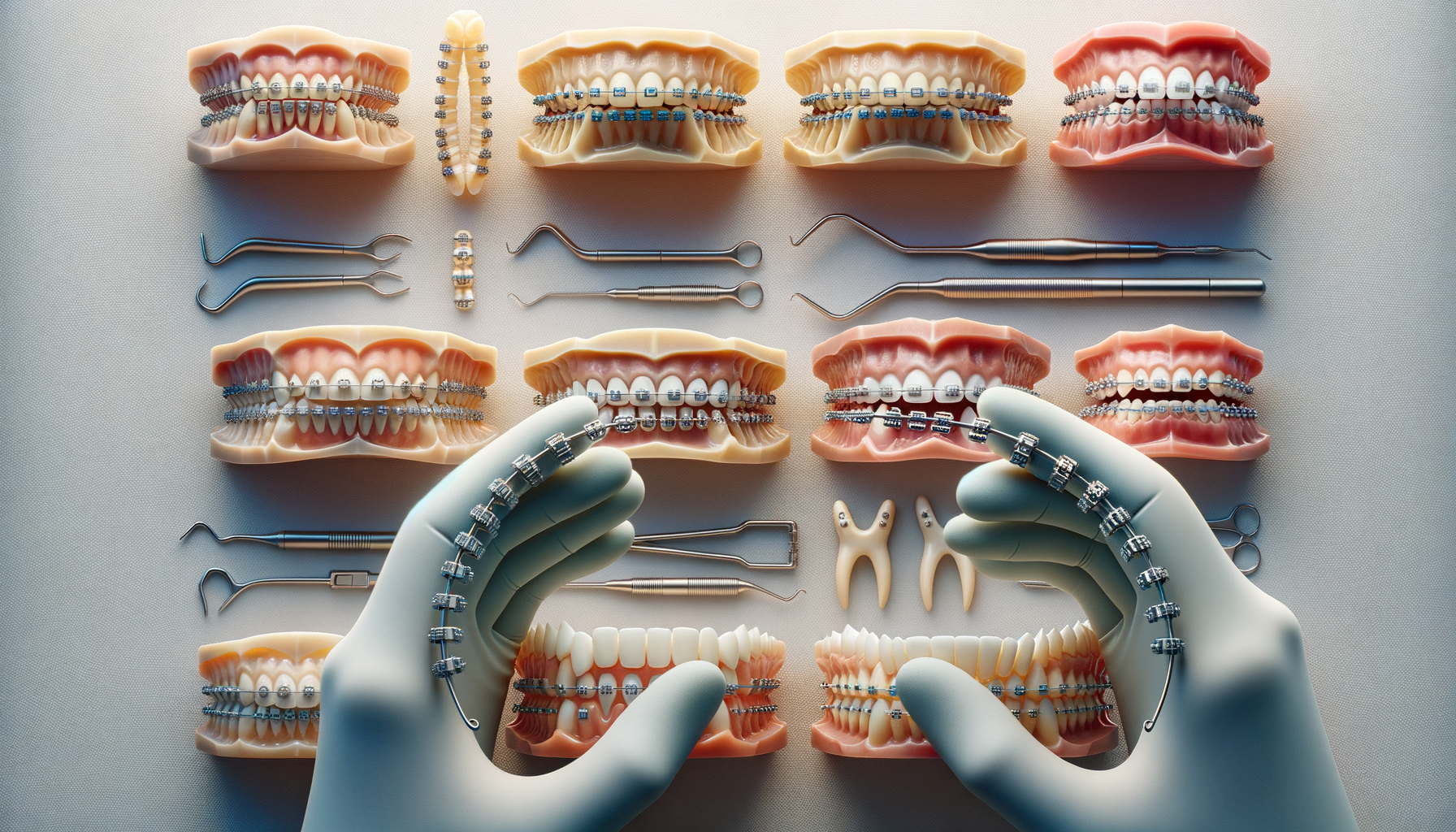Bracing Smiles: A Comprehensive Guide to Dental Braces for All Ages
Dental braces are a transformative tool in orthodontics, offering solutions for misaligned teeth across all age groups.

Introduction to Dental Braces for Every Age Group
Dental braces have long been a cornerstone in orthodontics, providing effective solutions for misaligned teeth and jaw issues. Whether for children, teenagers, or adults, braces can significantly improve oral health and aesthetic appearance. Understanding the nuances of braces for different age groups can help individuals and families make informed decisions. This comprehensive guide explores the benefits, considerations, and types of braces suitable for children, teenagers, and adults, ensuring that everyone can achieve a healthy, confident smile.
Braces for Children: Early Intervention and Benefits
Children’s orthodontics often focuses on early intervention to address developing dental issues. Braces for children, typically recommended between the ages of 7 and 14, can correct problems such as overcrowding, spacing, and bite issues before they become more severe. Early treatment can guide the growth of the jaw and incoming permanent teeth, reducing the need for more extensive treatments later in life.
Parents might wonder why it’s essential to consider braces at such a young age. The primary reason is that children’s bones are still growing, making it easier and quicker to correct orthodontic issues. Early intervention can prevent problems such as tooth decay, gum disease, and even speech difficulties, which can be exacerbated by misaligned teeth.
There are several types of braces available for children, including:
- Traditional metal braces: Known for their durability and effectiveness, these are the most common type of braces for children.
- Ceramic braces: These are similar to metal braces but are less noticeable due to their tooth-colored appearance.
- Lingual braces: Positioned behind the teeth, they offer a discreet option for children concerned about the appearance of braces.
Ultimately, the choice of braces depends on the child’s specific needs and the orthodontist’s recommendation. Early orthodontic treatment can set the foundation for a lifetime of healthy smiles.
Braces for Teenagers: Navigating the Journey to a Perfect Smile
Teenagers often find themselves at the crossroads of self-discovery and self-consciousness, making orthodontic treatment a significant consideration. Braces for teenagers are not only about achieving straight teeth but also about boosting confidence during these formative years. With the advent of various orthodontic technologies, teenagers now have more options than ever before.
Traditional metal braces remain a popular choice due to their effectiveness in treating a wide range of orthodontic issues. However, many teenagers opt for more discreet options such as ceramic braces or clear aligners, which offer the benefit of being less visible. Clear aligners, in particular, have gained popularity among teenagers due to their removable nature, allowing for easier maintenance of oral hygiene and the freedom to eat without restrictions.
The teenage years are an ideal time for orthodontic treatment because the jaw and teeth are still developing, making it easier to achieve desired results. Orthodontic treatment during adolescence can address issues such as:
- Overbites and underbites
- Crowding and spacing issues
- Alignment of the jaw
It’s important for teenagers to adhere to their orthodontist’s guidelines, including regular adjustments and wearing retainers post-treatment, to ensure long-lasting results. With the right approach and commitment, braces can transform not just smiles but also the self-esteem of teenagers, setting them up for future success.
Braces for Adults: Embracing Orthodontics at Any Age
It’s never too late to achieve the smile you’ve always wanted, and more adults are turning to orthodontics to address dental concerns. Adult braces can correct various issues, including crooked teeth, gaps, and bite problems, contributing to improved oral health and aesthetics.
Adults may choose orthodontic treatment for several reasons:
- Improving oral health by correcting misalignments that can lead to tooth decay and gum disease.
- Enhancing appearance and boosting self-confidence in both personal and professional settings.
- Preparing for other dental procedures, such as implants or bridges, by ensuring proper alignment.
Adults have a variety of braces to choose from, including traditional metal braces, ceramic braces, lingual braces, and clear aligners. The choice often depends on the individual’s preferences, lifestyle, and the complexity of their dental issues. Clear aligners are particularly popular among adults for their convenience and subtlety.
While adult orthodontics may require more time than treatment for children or teenagers, the benefits are well worth the commitment. With advancements in orthodontic technology, adults can achieve effective results with minimal discomfort. Embracing braces as an adult is an empowering decision that can lead to a healthier, more confident smile.
The Journey to a Healthy Smile: Conclusion
Dental braces are a versatile and transformative tool that can benefit individuals at any age. Whether for children, teenagers, or adults, braces offer a pathway to improved oral health and enhanced self-esteem. By understanding the unique considerations and options available for each age group, individuals and families can make informed decisions that lead to long-lasting results.
Orthodontic treatment is not just about aesthetics; it’s about investing in one’s overall health and well-being. With the guidance of a skilled orthodontist, the journey to a healthy smile can be a rewarding and life-changing experience.